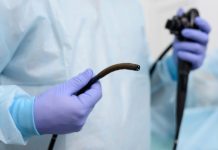There are several tests available for determining whether you are suffering from mold sickness. These include testing for IGF-1 in your blood, skin, and urine. However, most family physicians don’t know which tests to use to diagnose the condition. If you think you may be suffering from the disease, it’s important to seek a specialist’s help.
Tests to determine if you’re suffering from mold sickness
Testing for mold exposure is crucial if you suspect you’ve been exposed to the harmful substances produced by molds. These mold toxins, known as mycotoxins, can affect your body and cause symptoms of allergic reaction and other conditions. These toxins can be absorbed into your body through your skin, nose, lungs, and digestive tract. They can also affect the blood, kidneys, and liver.
Currently, there are two main types of tests to determine whether you’re suffering from mold sickness. The first is an IgG test, which reveals whether you’ve been exposed to mold. The second type of test, IgE, is used to diagnose mold allergy. Both types of tests are useful in determining whether you’re suffering from mold sickness or mold allergy.
If you suspect that you’re suffering from mold sickness, the first step is to seek medical attention. Your doctor may perform a skin prick test, which involves scratching your skin with needles containing purified mold allergens. If you’re allergic to mold, your skin will develop raised bumps. Another test is a blood test, which will measure your immune system’s reaction to the allergens. During this test, your physician will also determine whether you’ve been exposed to mold for an extended period of time.
Tests to measure IGF-1 in your blood
If you think you might be affected by mold sickness, you can get a blood test to determine the level of this immune factor. Several labs around the world do this test, and most insurance companies pay for it. The procedure involves drawing blood from a vein in the arm. It takes less than five minutes, and there are no special preparations required. The only risks are slight pain and bruising, but these will go away quickly.
A high level of IGF-1 in your blood could indicate a number of symptoms. It can be associated with an elevated risk for rheumatic disease or allergic reactions. IGF-1 is produced by skeletal muscles and other tissues and released into the blood at a steady rate. It is similar to growth hormone in that it promotes the normal growth of bones and tissues in the body. Although the levels of GH fluctuate depending on diet and activity levels, IGF-1 remains relatively constant throughout life. This test can help determine whether you have a high or low level of IGF-1 in your blood.
Besides the IGF-1 blood test, there are other ways to identify an IGF-1 deficiency. One way is to reduce your intake of proinflammatory cytokines. Proinflammatory cytokines are harmful to the body and impair IGF-1 bioactivity. You can reduce your intake of these hormones by eating a diet rich in fruits and vegetables. Also, you should reduce your intake of dairy products, gluten, and other foods that cause inflammation.
Tests to measure IGF-I in your urine
If you think you may be suffering from a mold sickness, you may want to take tests to measure the level of IGF-I in your urine. This protein is produced by the human immune system and is normally present in tiny amounts in blood. Taking these tests can help you to determine if you’ve been exposed to a mold spore or mold spores.
A urine test for mycotoxins is simple and noninvasive. Most urine tests require a sample of your urine, but some can be conducted on sputum, nasal secretions, or a tissue biopsy. Tests for mold toxins can be ordered through your primary care physician or by a lab. They are available in 26 states, but you’ll need a physician’s order to get one. A mold sickness test may help you identify the causes of your symptoms, determine if you’ve had any recent exposure to mold, and decide on treatment options.









